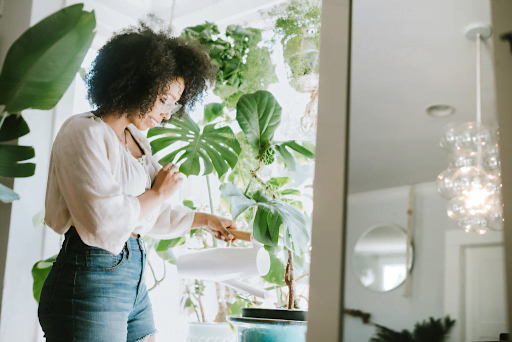The more time we spend in the house, the more we need focus on keeping it clean, including the things we can’t see. Houseplants are our often-overlooked helpers in ridding the air of pollutants and toxins. But many are effective allies in keeping your household air clean and pure.
It is suggested that one plant should be allowed for approximately 10 square yards of floor space, assuming average ceiling heights of 8 to 9 feet. This means that you need two or three plants to contribute to good air quality in the average domestic living room of about 20 to 25 square yards.
Research has shown that these 10 plants are the most effective all-around in counteracting offgassed chemicals and contributing to balanced internal humidity.
Here are some of the best air-purifying houseplants and the toxins they are most effective at reducing:
1. Bamboo Palm (Chamaedorea seifritzii)—benzene, formaldehyde, trichloroethylene (TCE)
2. Golden Pothos (Chrysanthemum morifolium)—This fast-growing vine is usually seen hanging in a cascade of green from baskets. You can pot it with a support, plant it in a hanging basket or train it to climb a trellis. It is quite an addition to your home, with its dark green leaves and golden streaks. The plant needs bright, indirect light and is great at fighting pollutants such as formaldehyde, usually found in car exhaust fumes. Heads up: Golden pothos is a poisonous plant and should be kept away from small children and pets. It’s not called the devil’s ivy for nothing.
3. Common Ivy or English Ivy (Hedera helix)—benzene, formaldehyde, TCE, toluene, octane, terpene (the most effective plant against benzene according to NASA)
4. Ficus tree or Weeping fig (Ficus benjamina)—benzene, formaldehyde, TCE, octane, terpene
5. Acre Palm (Dracaena massangeana)—One of the most common indoor plants, the areca palm doesn’t tolerate neglect too well. The soil needs to be kept moist for it to thrive. The plant, however, can survive on little sunlight. According to the NASA study, this plant filters out formaldehyde, xylene and toluene.
6. Peace lily (Spathiphyllum)—benzene, formaldehyde, TCE (Avoid lilies if you have cats – they can be toxic).
7. Purple heart (Tradescantia pallida)—benzene, TCE, toluene, terpene.
8. Red Ivy (Hemigraphis alternate)—benzene, TCE, toluene, octane, terpene.
9. Spider plant (Chlorophytum comosum, Chlorophytum elatum)— Commonly used to remove harmful chemicals such as benzene, formaldehyde, carbon monoxide and xylene from air, the “spider” is characterized by its tiny white flowers and rich foliage. Requiring low-maintenance and easy to grow, it thrives in cool to average home temperatures and prefers dry soil. Bright indirect sunlight keeps it growing best.
10. Wax plant (Hoya carnosa)—benzene, TCE, toluene, octane, terpene. (Source: BlackDoctor.Org/Felicia Vance, BDO Staff Writer

